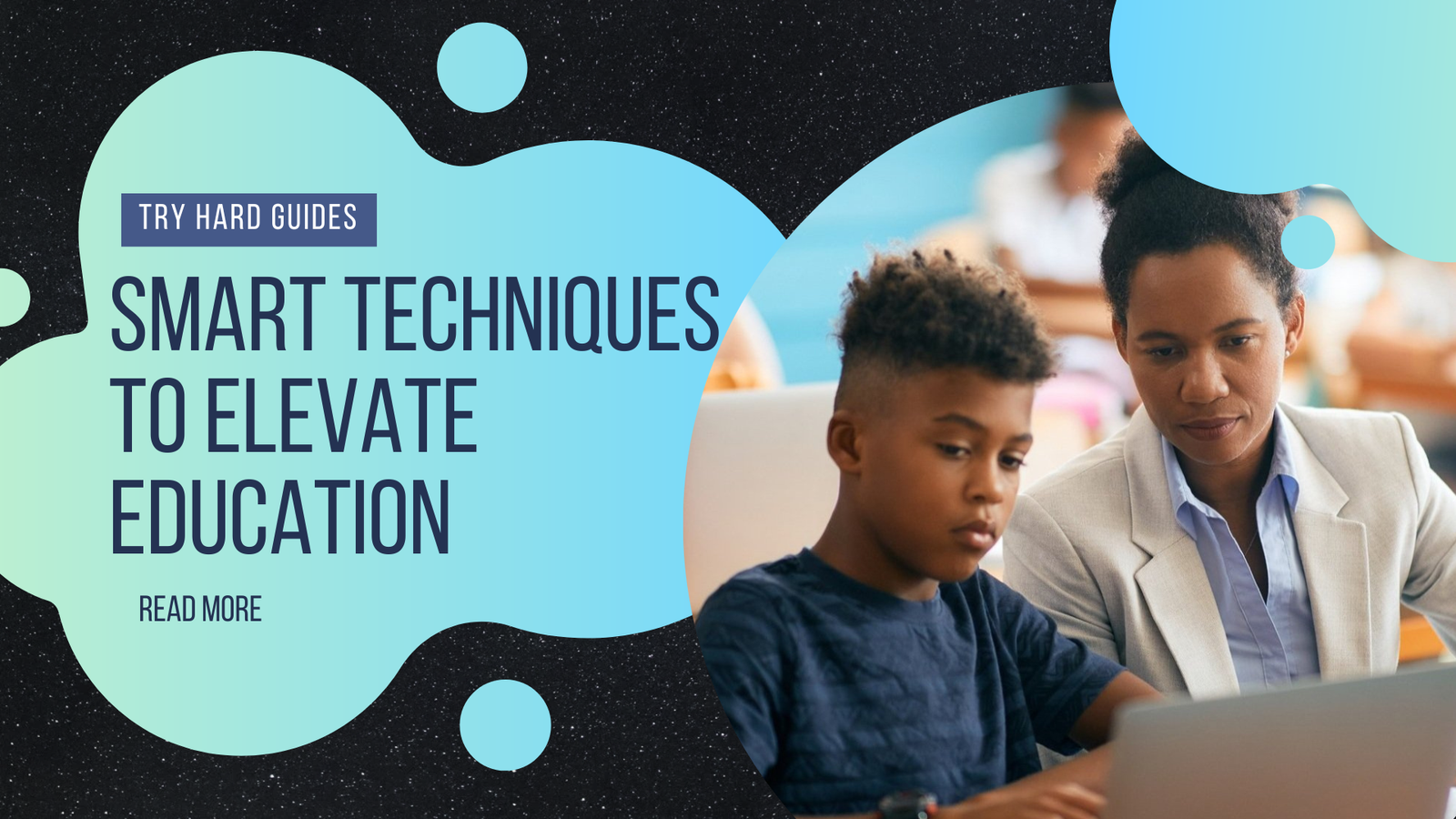Learning is changing every day. Now, schools and teachers use smart tools to help students learn better and faster. These smart techniques make learning more fun, easier to understand, and perfect for each student’s needs. One of the best tools helping students today is Anki Pro. It’s like a smart helper that shows flashcards, gives tips, and helps students remember things easily.
In this blog post, you will read about the newest and smartest ways to make learning better in 2025. These ideas are not only for big schools but can help everyone—teachers, parents, and kids too. Let’s see how smart techniques can make learning more exciting and help students shine in school and in life.
1. Personalized Learning Paths
Every student learns in their own way. Some like reading, some like watching videos, and others learn best by doing activities. Personalized learning means making lessons that fit each student’s way of learning. With the help of smart tools like Anki Pro, teachers can see what each student is good at and where they need more help.
Anki Pro helps by giving the right flashcards and practice at the right time. It also shows teachers how students are doing. This helps teachers plan better lessons for each student. When learning feels just right, students enjoy it more and do better in school.
2. Gamification
Learning can be fun—just like playing a game! Gamification means turning school lessons into games so students enjoy learning more. When learning feels like a game, students pay more attention and want to keep going.
Anki Pro helps with this by using fun tools like leaderboards (to see who’s doing well), badges (like rewards), and quizzes you can play. These game-like features make learning exciting. Students feel proud when they earn points or rewards, and they enjoy working together while trying their best. Gamification helps make school both fun and smart!
3. Blended Learning
Blended learning means mixing classroom lessons with online learning. Students learn from their teacher at school and also use the internet to study at home. This way, they get the best of both worlds!
Anki Pro helps with blended learning by giving teachers a place to share videos, lessons, and homework online. Teachers can also see how each student is doing. Students can watch lessons again, practice anytime, and learn at their own speed. Blended learning makes learning easier, more flexible, and always ready—whether you’re in class or at home.
4. Interactive Multimedia
Learning gets easier and more fun when we use pictures, videos, and animations. These are called interactive multimedia. They help explain big ideas in a simple way that’s easy to understand.
Anki Pro lets teachers add fun videos, moving pictures, and even learning games. These tools help students stay interested and remember more. Some kids learn better by watching, some by listening, and some by doing. With interactive multimedia, everyone gets to learn in the way that works best for them!
5. Collaborative Learning
Collaborative learning means working together with classmates. Students share ideas, help each other solve problems, and learn as a team. It’s like learning with friends!
Anki Pro makes this easy by giving students tools to talk in groups, do projects together, and review each other’s work. When students work together, they learn new things, become better problem-solvers, and grow their thinking skills. Teamwork makes learning more fun and helps everyone do better.
6. Real-Time Feedback
Feedback means getting helpful tips on your work. Real-time feedback means you get these tips right away, not later.
With Anki Pro, teachers can check your answers quickly and leave comments. This helps students fix mistakes fast and learn better. When students know how they are doing, they stay on track and feel more confident. It’s like having a helper who always gives you the right advice at the right time.
7. Adaptive Learning Technologies
Everyone learns at a different speed. Adaptive learning means the lessons change to match what each student needs.
Anki Pro uses smart tools that watch how a student is doing. If something is too easy or too hard, it makes changes right away. This keeps learning just right—not boring and not too tricky. It helps students stay interested and learn at their own pace.
8. Flipped Classroom
In a flipped classroom, students watch lessons at home and do fun learning activities in school.
Anki Pro helps by letting teachers upload videos and learning materials that students can see at home. Then in class, students can do projects, play learning games, and ask questions. This way, class time is more exciting and helps students learn better with their teacher’s help.
AI-Powered Tutoring Assistants
Smart computers called AI tutors are changing how students learn. These tutors help students just like real teachers. They explain hard topics, give tips, and answer questions right away. In 2025, tools like Anki Pro use AI to help each student in a special way. The AI watches how a student is doing and gives help that fits their level. This makes learning easier and more fun.
Teachers also get help from AI. It can check homework, plan lessons, and save time. That way, teachers can spend more time talking with students and helping them learn better. These AI helpers work really well in big classrooms and online schools where students may need extra support. Adding AI tutors makes learning faster, smarter, and more fun for everyone.
9. Mobile Learning
Today, many students use phones and tablets every day. Mobile learning means using these devices to study anytime and anywhere!
Anki Pro works great on phones and tablets. Students can watch lessons, practice flashcards, and learn while sitting at home, in a car, or even at the park. This helps students keep learning, even outside school. It’s easy, fast, and perfect for learning at your own speed.
10. Data-Driven Decision Making
Smart tools can show teachers how students are doing in school. This is called data-driven learning. It helps teachers make better choices for each student.
Anki Pro has special tools that track what students are learning and where they need help. Teachers use this data to change lessons, give extra support, or try new ideas. This makes learning better for everyone because it’s based on real facts, not guessing.
Learning Analytics for Student Wellbeing
Learning is not just about getting good grades—it’s also about feeling happy and healthy. In 2025, smart tools can help teachers know how students are feeling. Tools like Anki Pro now show if a student is tired, stressed, or needs a break. These tools look at how often students study, how long they take to answer, and other signs to check how they’re doing.
If a student feels overwhelmed, the teacher can change the lessons or give helpful advice. This way, students stay strong in both their minds and hearts. Schools are now using these smart tools to care about the whole student—not just schoolwork. Learning is better when students feel good, and these new tools help make that happen.
Conclusion
Smart ideas and new tools are making school better than ever. Today, learning is not just reading books—it’s using fun games, smart tutors, and tools that care about how kids feel. Anki Pro is one of these amazing tools. It helps students learn in their own way and at their own speed. With smart ideas like these, teachers can make learning fun, helpful, and exciting for everyone.
By using these smart techniques in 2025 and beyond, schools can help students grow, do their best, and enjoy learning every day. The future of learning is bright—and it starts with smart thinking today.
FAQs – Smart Techniques to Elevate Education
Q1: What are smart techniques in education?
Smart techniques use new tools and ideas, like apps and games, to make learning fun and easier for students.
Q2: How does Anki Pro help students?
Anki Pro helps by giving flashcards, videos, quizzes, and even real-time feedback. It also works on phones and tablets.
Q3: Can these tools be used at home too?
Yes! Students can learn at home using Anki Pro. They can watch lessons, do homework, and practice anytime they want.
Q4: Why is teamwork important in learning?
Working in groups helps students share ideas, solve problems together, and learn from each other.
Q5: What makes mobile learning special?
Mobile learning means you can study from anywhere—at home, on a trip, or even in the car—with just a phone or tablet.

I’m Emma Rose, the founder of tryhardguides.co.uk, and a content creator with a passion for writing across multiple niches—including health, lifestyle, tech, career, and personal development. I love turning complex ideas into relatable, easy-to-digest content that helps people learn, grow, and stay inspired. Whether I’m sharing practical tips or diving into thought-provoking topics, my goal is always to add real value and connect with readers on a deeper level.
Discover more from Try Hard Guides
Subscribe to get the latest posts sent to your email.

